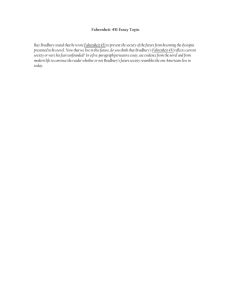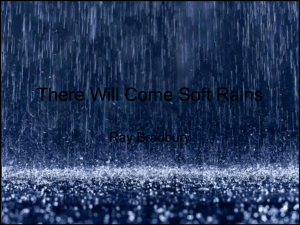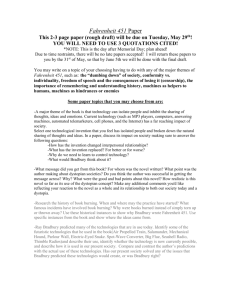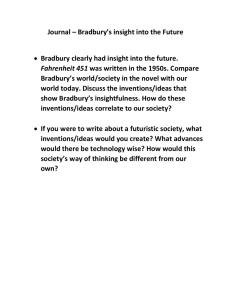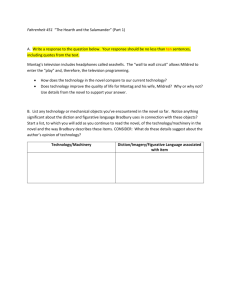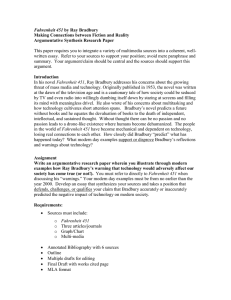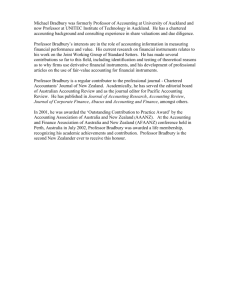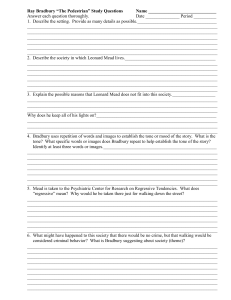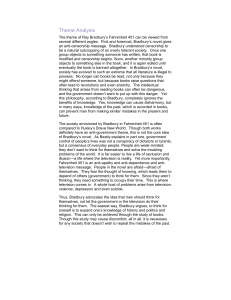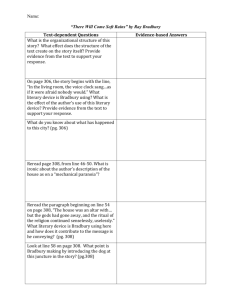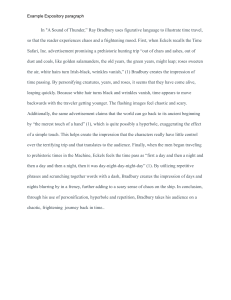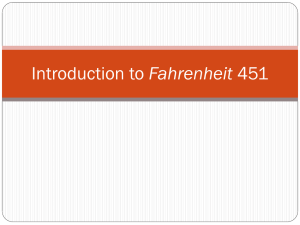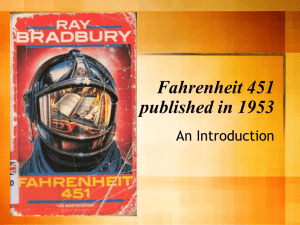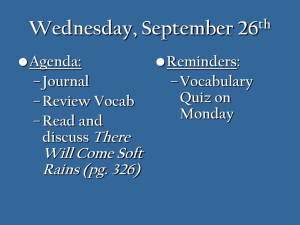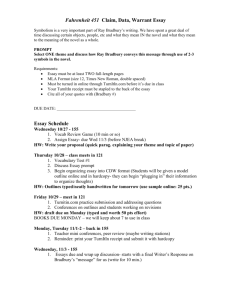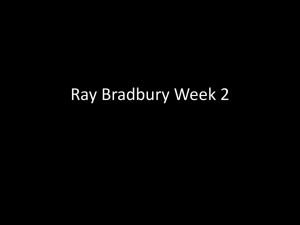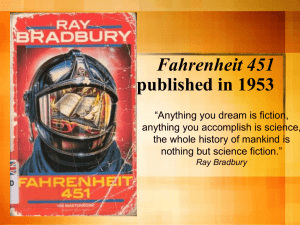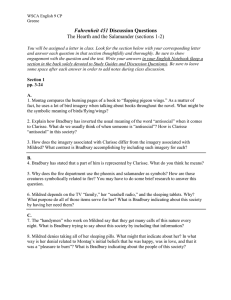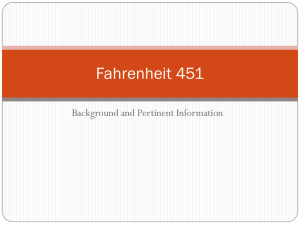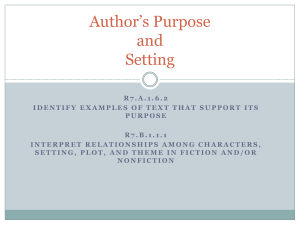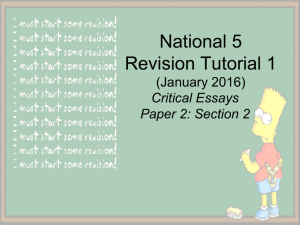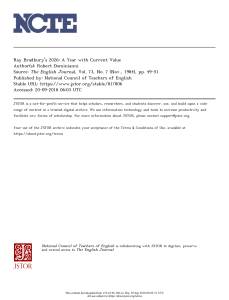Fahrenheit 451 Unit
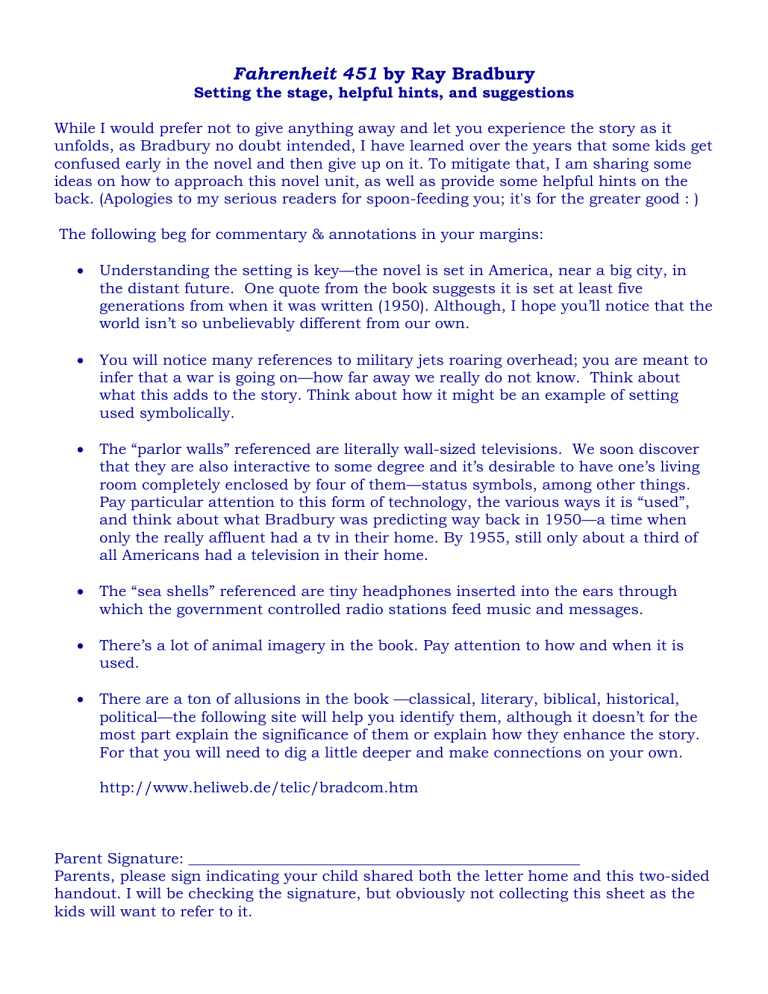
Fahrenheit 451 by Ray Bradbury
Setting the stage, helpful hints, and suggestions
While I would prefer not to give anything away and let you experience the story as it unfolds, as Bradbury no doubt intended, I have learned over the years that some kids get confused early in the novel and then give up on it. To mitigate that, I am sharing some ideas on how to approach this novel unit, as well as provide some helpful hints on the back. (Apologies to my serious readers for spoon-feeding you; it's for the greater good : )
The following beg for commentary & annotations in your margins:
Understanding the setting is key—the novel is set in America, near a big city, in the distant future. One quote from the book suggests it is set at least five generations from when it was written (1950). Although, I hope you’ll notice that the world isn’t so unbelievably different from our own.
You will notice many references to military jets roaring overhead; you are meant to infer that a war is going on—how far away we really do not know. Think about what this adds to the story. Think about how it might be an example of setting used symbolically.
The “parlor walls” referenced are literally wall-sized televisions. We soon discover that they are also interactive to some degree and it’s desirable to have one’s living room completely enclosed by four of them—status symbols, among other things.
Pay particular attention to this form of technology, the various ways it is “used”, and think about what Bradbury was predicting way back in 1950—a time when only the really affluent had a tv in their home. By 1955, still only about a third of all Americans had a television in their home.
The “sea shells” referenced are tiny headphones inserted into the ears through which the government controlled radio stations feed music and messages.
There’s a lot of animal imagery in the book. Pay attention to how and when it is used.
There are a ton of allusions in the book —classical, literary, biblical, historical, political—the following site will help you identify them, although it doesn’t for the most part explain the significance of them or explain how they enhance the story.
For that you will need to dig a little deeper and make connections on your own. http://www.heliweb.de/telic/bradcom.htm
Parent Signature: ____________________________________________________
Parents, please sign indicating your child shared both the letter home and this two-sided handout. I will be checking the signature, but obviously not collecting this sheet as the kids will want to refer to it.
Reading Hints
Start by reading the front and back cover in its entirety. If your edition has a preface, read that as well.
Really read the book and please don’t procrastinate in doing so. I’m serious. It’s a
GREAT book—rich, gorgeous language and so very timely and thought provoking.
I just re-read it again over break and I continue to marvel over the seemingly effortless genius of Bradbury. So really read it. Don’t rush it. And for goodness sake, don’t just look for the answers to the focus questions! Read it. Luxuriate in the language and ideas.
If you are not a “reader”, consider getting an audio version with which you can
read along. You must read along, though!
Read each section in its entirely BEFORE you start to work on the focus questions.
Read the packet first, yes, but don’t start responding to the questions until you complete a section. The following is the process I recommend: o Each time before you settle down to read, review the packet to help focus your comprehension o Read as much as you are able in one sitting, with vocab list close at hand, annotating and highlighting as you go. In addition to concepts discussed on previous page, these are the kinds of things I would also make note of:
Unfamiliar words, names, and phrases—go back and define or look up
Questions you have (highlight, then “?”)—mark so you can ask in class
Symbolism-beyond the more obvious ones featured— Colors, Setting,
Pacing (pay attention to how character is revealed through such elements, and how they may reflect a change in perspective)
Thought-provoking ideas/emerging themes—particularly as they relate to our own world
Character information/distinguishing quotes—pay particular attention to anything that signals a change in Montag’s character arc and any character anomalies
Figurative language examples (obviously not all of it or you’ll be highlighting every other line.)
Passages that seem to relate to the focus questions
Anything else that strikes you o After you complete each of the three sections, then attack the focus questions, realizing that you may need to go back and re-read for some sections
Ideally, if you had the time, you would read each section in its entirety a second time. It will go faster and you will pick up on way more the second time around.
Trust me. While I realize that this is not always possible, I highly recommend it.
Talk about what you’re reading with someone—a parent, a friend...
